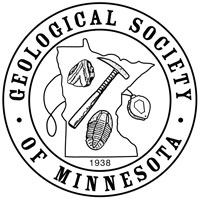Seminar Lab Date:
Seminar Lab presenter:
Seminar Lab Subject:
Seminar Lab Location :
In-person only at U of Minnesota Keller Hall Room 3-210
Address: 200 Union St. SE, Minneapolis MN (parking ramp is next door)
Lecture start time 7:00 PM CT
Seminar Lab Details:
Summary: North America was a very different place 18,000 years ago compared to today. About half of the continent, southward to a line approximating the Missouri and Ohio River valleys, was covered in an ice sheet several kilometers thick. Biomes were a different geographic configuration than today, with the largest areas being a mixtures of tree species that do not occur together today, so-called non-analog biomes. Humans, if we were in North and/or South America by then, were so widely and sparsely distributed that purported evidence of our earliest presence is rare (but widespread) and putative sites older than about 14,000 years ago remain controversial and debated. And perhaps the most prominent difference from today is that the unfamiliar landscapes were home to a host of now familiar but long gone large-bodied mammals that were emblematic of the Ice Ages: mammoths, mastodons, giant armadillos, giant ground sloths, saber toothed cats. These and other mammals were present until a narrow interval about 10-12,000 years ago when it seems they all went extinct across North America in a geological instant. The two leading hypotheses explaining the extinctions are 1) climate and habitat changes associated with the end of the last glacial interval as the Earth warmed and the ice sheet retreated northward across what is now Canada and 2) the arrival or increase in population size of humans, a novel predator to Ice Age America with complex social behavior and sophisticated tools for hunting large animals. In this talk I will review the climatic and biotic changes in North America and globally over the last 18,000 years and discuss and critique both hypotheses for the cause of the extinction. However, I will conclude that the balance of evidence supports a major role for humans in the extinctions in North America and argue that the North American case fits into a pattern of human impacts on biota over the last 50,000 years as humans dispersed from Africa and western Eurasia across the globe.
Biography: I am a vertebrate paleoecologist and paleobiologist. My research focuses on the connections between changes in climate and habitats through Earth history and changes in the species composition and ecological structure of organismal communities. Most of my projects focus on Cenozoic ecosystems over the last 65 million years and modern ecosystems with an emphasis on mammalian communities. My research is expressly interdisciplinary and relies on data, methods, and theory from geochemistry, sedimentary geology, traditional paleontology, ecology, evolutionary biology, comparative anatomy, and biogeography. The primary tools I use to examine the connections between environmental and organismal change are the elemental and stable isotope geochemistry of various materials (sedimentary minerals and organic matter; teeth, bones, and other tissues of fossil and modern organisms), the biogeography of modern and fossil mammals, and quantitative analyses of the three dimensional morphology of the teeth, jaws, and skulls of modern and fossil and modern mammals.
Education: PhD, 1999, University of Michigan
